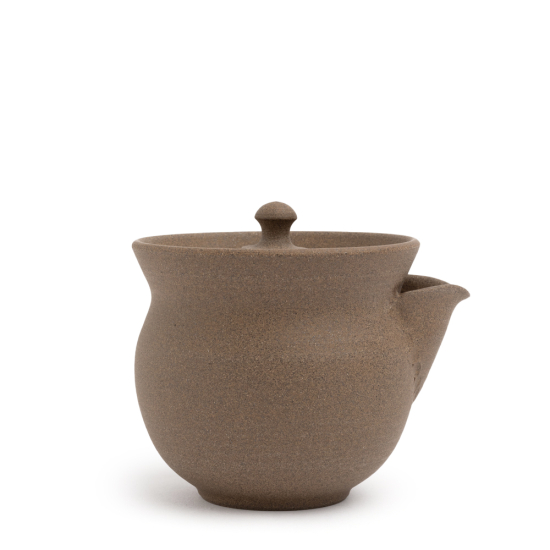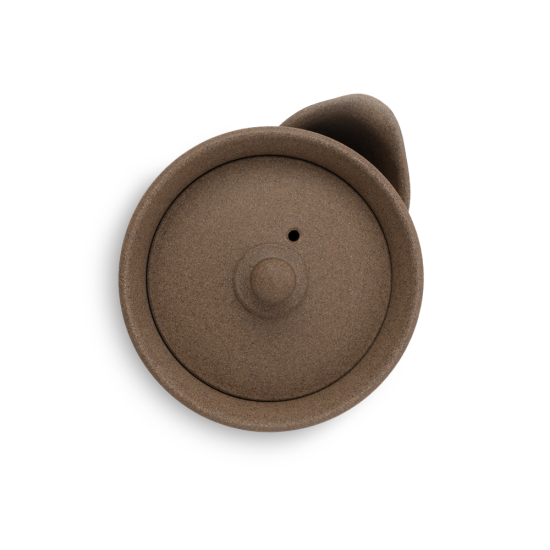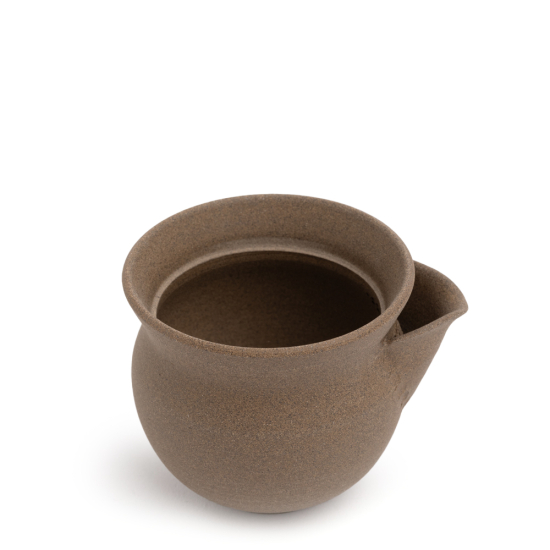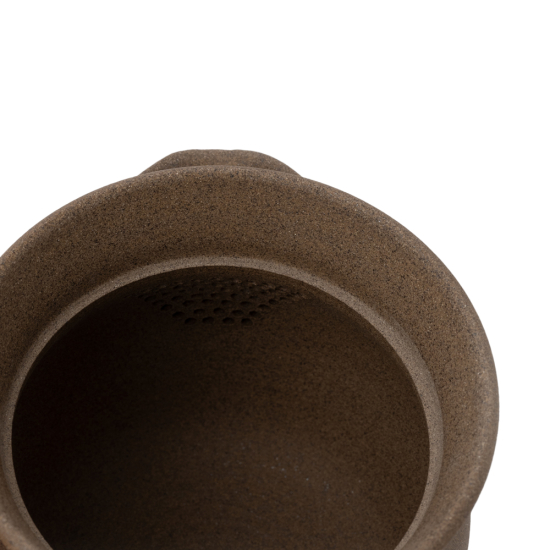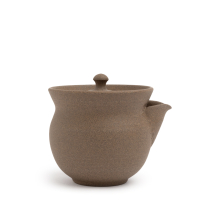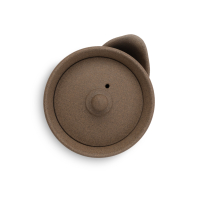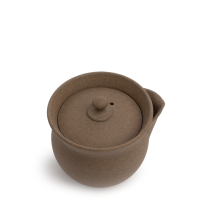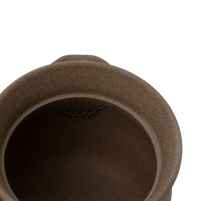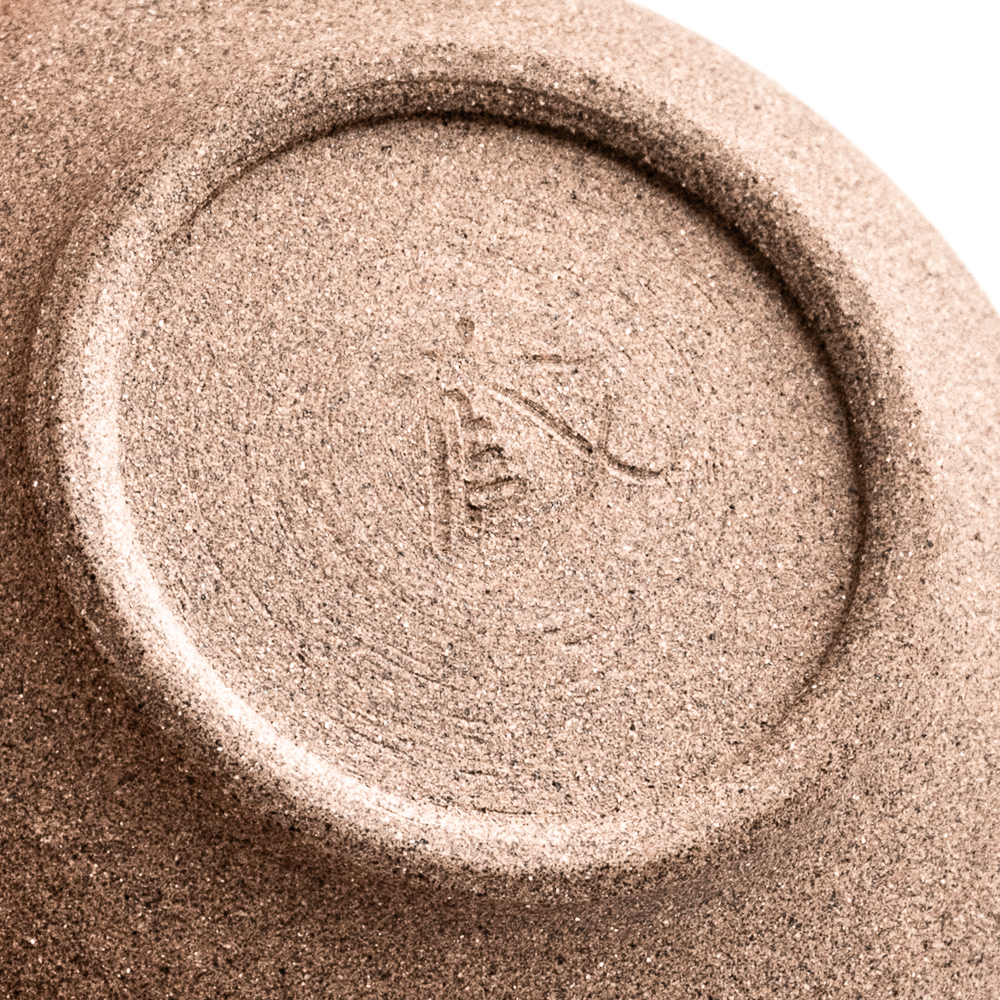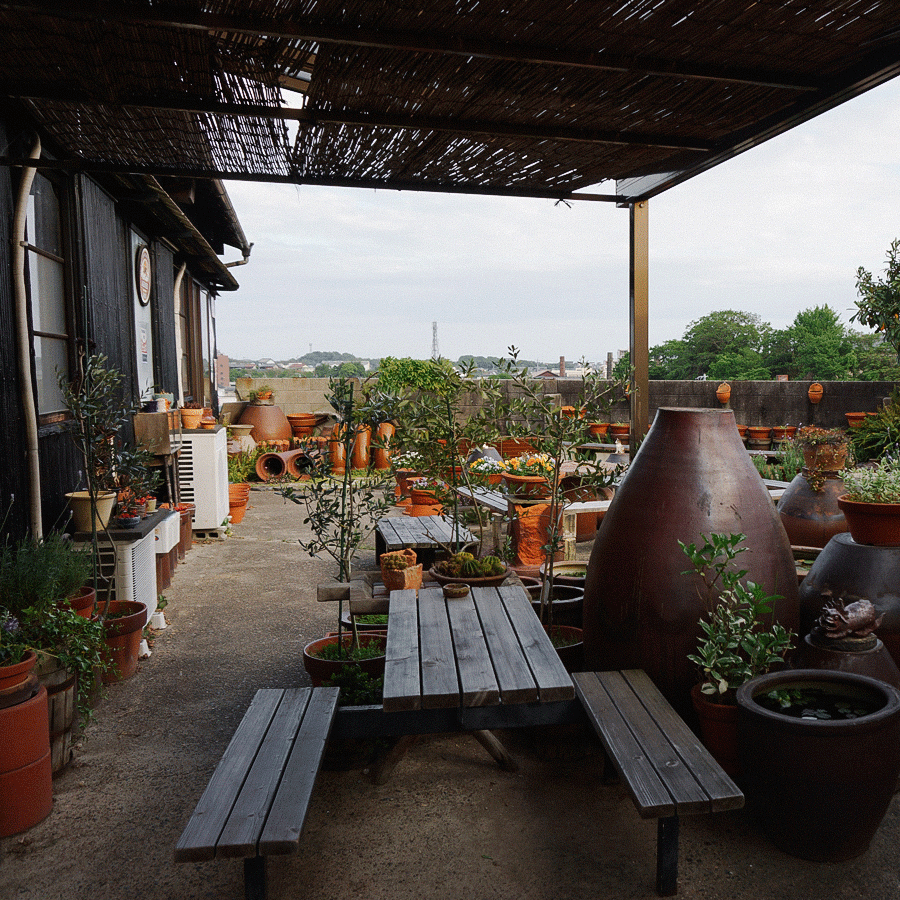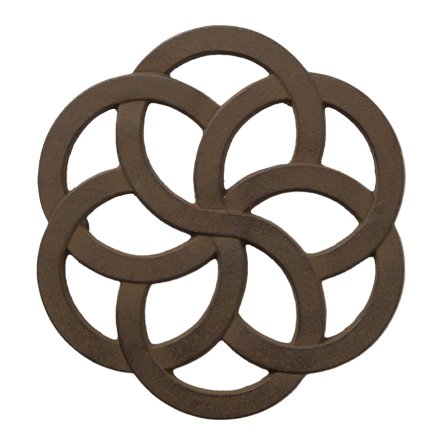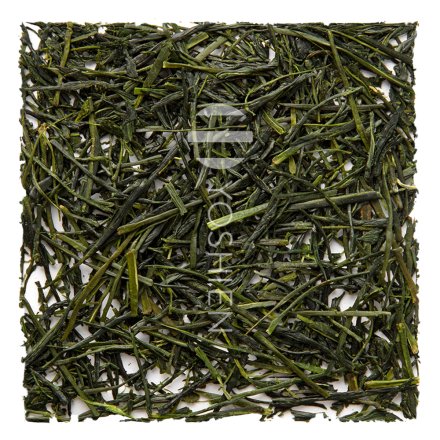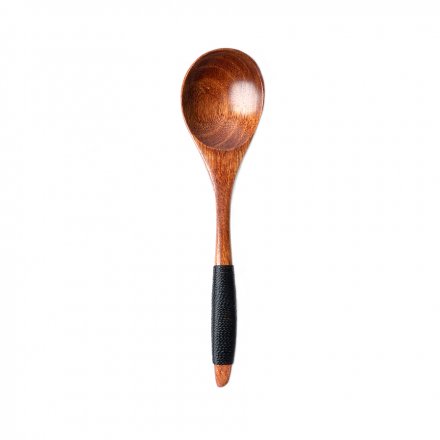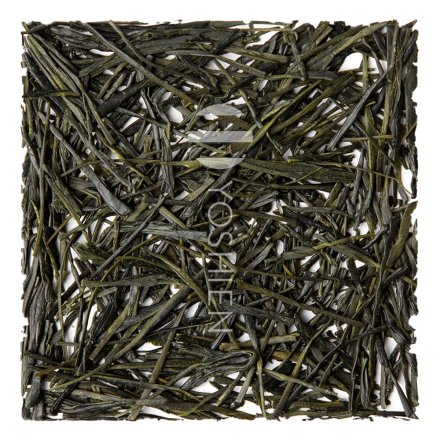Unglazed teaware should be washed by hand with warm water only, without any washing-up liquid, which could get absorbed by the porous clay. The outside of the teapot may be cleaned with a soft cloth, but the inside should only be rinsed with warm water to ensure the patina stays intact. Always leave to air dry naturally with the lid off, the exterior may be dried with a towel. Do not put in the dishwasher, microwave or oven. If tea leaves get trapped in the strainer, brush away with a soft brush. Hard water may cause limescale deposits to develop, in which case rinse with soft bottled water, then wipe with a soft cloth.
Hohin Tokoname
Marugata Chairo
Junzo Maekawa
SKU
5858
Take your green tea brewing to the next level with this eye-catching Hōhin teapot handcrafted by fourth generation Tokoname-yaki potter, Junzo Maekawa. The unglazed matte brown finish has a pleasant grainy texture, which together with the unique design gives this Hōhin a particularly contemporary touch.
| Product | Hohin teapot, brown |
| Origin | Tokoname, Aichi, Japan |
| Maker | Junzo Maekawa |
| Volume | 150ml |
| Dimensions | Ø7cm x W7.5cm x H9cm |
| Material | Ceramic |
| Strainer | Ceramic |
| Artist mark | Signature on base |
| Packaging | Cardboard box |
Each piece is handmade and unique, therefore size and colour may vary slightly



